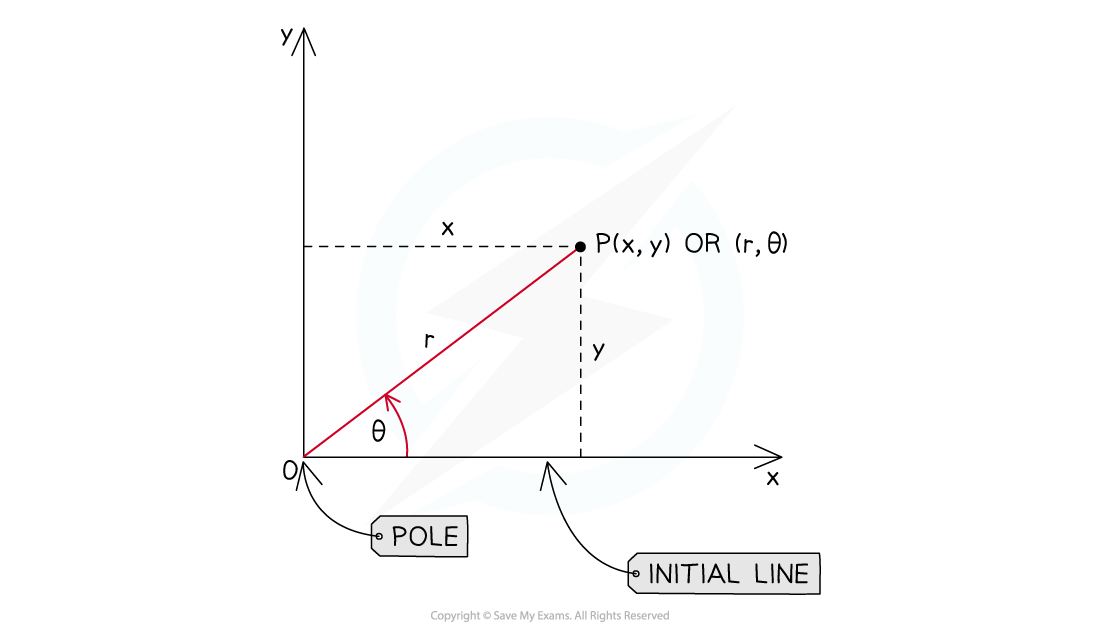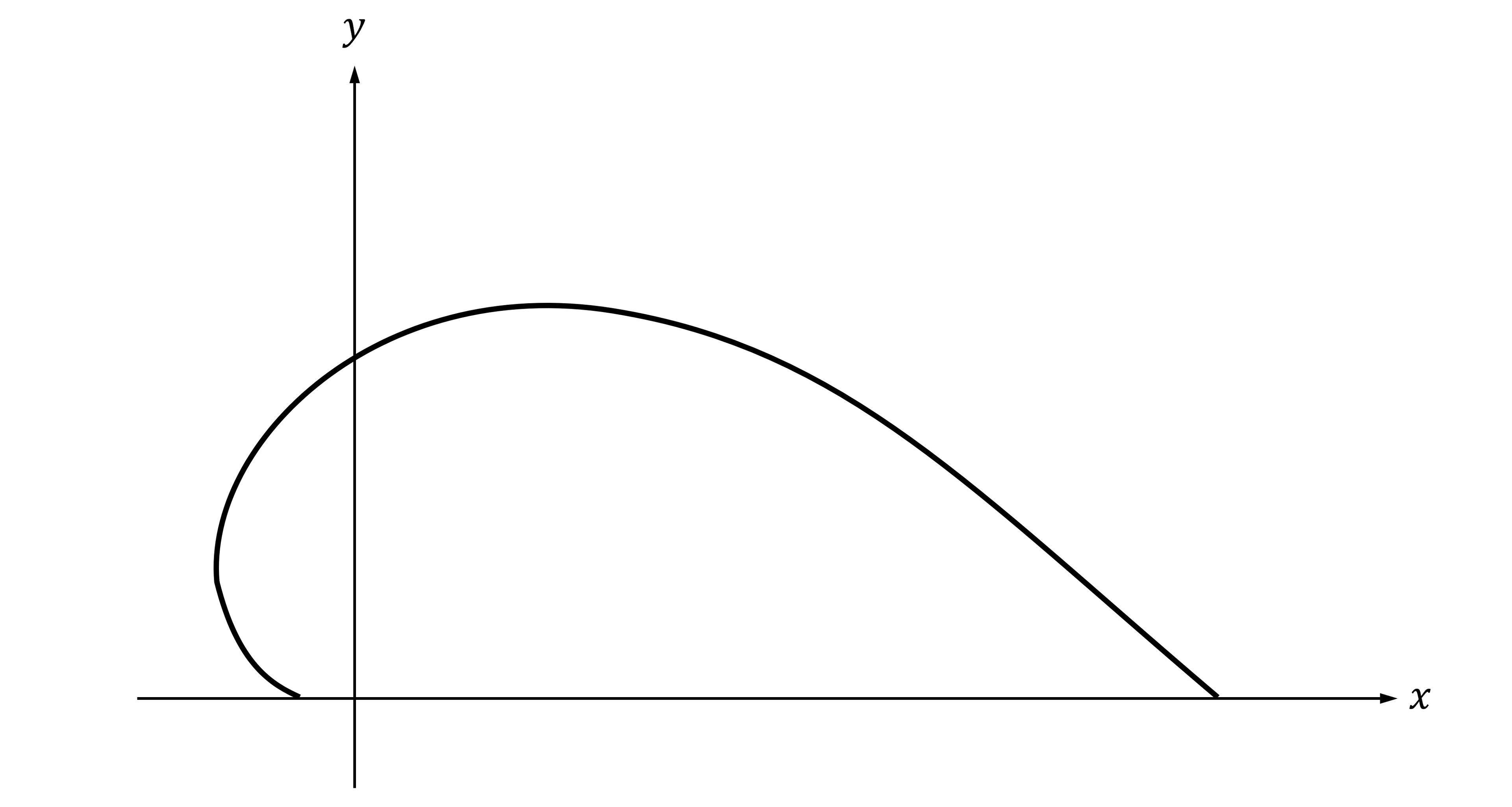Derivatives of Polar Curves (College Board AP® Calculus BC): Study Guide
Derivatives of polar curves
How do I find dr/dθ of a polar curve?
To find
of a polar curve,
, differentiate it with respect to
e.g. if
then
The sign of the derivative can be interpreted as follows:
means
is increasing with respect to
Points on the curve are moving further away from the origin as
increases
means
is decreasing with respect to
Points on the curve are moving closer to the origin as
increases
For certain polar curves, the point at which
is the point that has the greatest distance from the origin
If two polar curves are given,
and
, then
is the rate at which the distance between the two curves is changing with respect to
How do I find dx/dθ of a polar curve?

To find
of a polar curve,
,
either differentiate the trigonometric relationship
using implicit differentiation (as
is not a constant - it varies with
) and the product rule
Then substitute in
and
or substitute the curve equation,
, directly into
to get
Then differentiate this to find
The sign of the derivative can be interpreted as follows:
means the
-coordinate is increasing with respect to
Points on the curve are moving in the positive
-direction as
increases
means the
-coordinate is decreasing with respect to
Points on the curve are moving in the negative
-direction as
increases
How do I find dy/dθ of a polar curve?
To find
of a polar curve,
either differentiate the trigonometric relationship
using the product rule (as
is not a constant - it varies with
)
Then substitute in
and
or substitute the curve equation,
, directly into
to get
Then differentiate this to find
The sign of the derivative can be interpreted as follows:
means the
-coordinate is increasing with respect to
Points on the curve are moving upwards as
increases
means the
-coordinate is decreasing with respect to
Points on the curve are moving downwards as
increases
Examiner Tips and Tricks
In an exam question, it is often easier to derive the formulas for and
using the product rule, than trying to learn their results.
How do I find the slope of a polar curve, dy/dx?
The formula for the slope of a polar curve,
, is
The derivatives
and
come from above
The formula itself comes from the chain rule:
Examiner Tips and Tricks
Questions may ask you to find the equation of a tangent to a polar curve, which will require you to calculate the slope.
How do I find the second derivative of a polar curve with respect to x?
The formula for the second derivative of
with respect to
,
, for polar equations in terms of
is
means differentiate the expression for the slope of the polar curve,
, with respect to
Recall that
and that
from above
The formula for the second derivative comes from the chain rule:
Examiner Tips and Tricks
If you have studied parametric equations, then it helps to know that the second derivative formula of a polar curve is the same as the second derivative formula of a parametric curve, just with instead of
.
How do I find derivatives of polar curves with respect to time, t?
To find derivatives of a polar curve with respect to time,
, use the chain rule (related rates of change)
These are used in questions about a particle moving around a polar curve
For example, if
at
on the curve
, then to find
at
:
Use that
Substitute in
and
Use that
where
(by differentiating
)
This gives
If you are given a relationship between
and
, you can substitute this into the equation of the polar curve
e.g. If
and
, then
The position vector is then given by
See the study guide on 'Motion with Vector-Valued Functions'
Examiner Tips and Tricks
If a polar coordinates question asks to find a derivative at a particular point, read the question carefully to see which derivative is being asked for ('with respect to' what).
Worked Example
A sketch of the polar curve is shown below, where
.

(a) Find at
and interpret the result.
Answer:
Differentiate with respect to
Substitute in
A negative value of means points on the curve are moving closer to the origin
at
which means
is decreasing with respect to
, so the points on the curve are moving closer to the origin as
increases
(b) Find the slope of the line tangent to the curve at .
Answer:
The formula for the slope of a polar curve is
Substitute and
into the formula and simplify
Now substitute into the expression above
at
(c) It is known that the derivative simplifies to
. Find the value of
at
.
Answer:
The second derivative with respect to is given by the formula
The numerator is given in the question, , so substitute
in and simplify
The denominator is which, from part (b), is
Substitute in and simplify
Divide the numerator by the denominator and simplify
at
(d) A particle is moving around the curve such that at the point the rate at which the angle is increasing with respect to time,
, is 3 radians per second. Find and interpret the value of
at the point
.
Answer:
The rate at which the angle is increasing with respect to time, , is
, so
at
Use the chain rule (connected rates of change) to write as a derivative involving
Find an expression for , which has the formula
and which has already been found in part (b)
Substitute ,
and
into
, and a negative value of
means the
-coordinate of the particle's motion is decreasing as time increases.
at
, so the the
-coordinate of the particle's motion is decreasing as time increases

Unlock more, it's free!
Did this page help you?